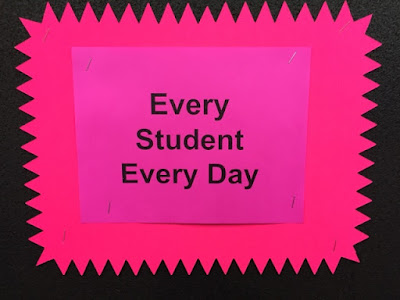Literacy Program in my Classroom
With teaching 8th grade, the number one question that I have been asked is:
How do you run your literacy program
Teaching language to teenagers runs into several problems.
1. It can not be too cutesy. That is teacher lesson suicide. If the teens do not buy in, then it will flop.
2. I need to incorporate technology and yet, I am not a one to one device school. Limited resources and a roomful of students.
3. I want to meet with each student. My own personal goal is to meet with every student, every day. Even if it is just for a few minutes.
4. Teens need independence and choice. ABSOLUTELY.
Okay....those were my challenges. I started off with my goal in mind. I posted it right on my bulletin board for the students to see so that they know I WANT to meet with them. A mini lesson together and it is my goal and my own personal desire.
Here is what I have developed to manage my literacy block. (P.S. This is a 100 min. block which I also need to incorporate some science due to my schedule this year.)
Students are put into teams. The teams are mixed ability, behaviour abilities and friendship groups.
There is a rotation schedule that is up for everyone to see.
The rotation does not change.
Explain your thought please.......
I have a rotation that does not change. Then it is clear no matter what happens to our school schedule, special days, holidays or P.D. days what is happening that day. Students just look to what day of the week it is and that is their first rotation.
Example: Team Three on Wednesday would start at station six which would be At The Teacher Table.
The rotation schedule does not change but the teams do. Each student has a mini copy of this in their notebooks as well as it is posted on the bulletin board.
Stations: There are 8 Stations
Station One: Large Group
Everyone is together for a read aloud, mini lesson on writing, oral sharing activity etc.
Station Two: Independent Reading.
Students read in the classroom library with a book of their choice.
Station Three: Thinking with a Text
Students reading at their desks with a book of their choice.
Station Four: Explain your thoughts.
Students write a minimum half page letter weekly to me about their reading thoughts. Students have a chance to use a thinking stem page to help them kick start their sentences if they are stuck.
Station Five: Writing
Students could be working on an assigned writing task or free write.
Station Six: At the Teacher Table
Students meet with me at the back table. Here we share reading, guided reading and questions. I am trying to connect this to our read aloud with non-fiction pieces of text.
Station Seven and Eight are both: CHOICE
Students choose off a list of activities to do that is provided to them at the start of the week. I post the list in my google classroom (one to save paper and two for students to be able to access it at any time). Some of the activities are due at the end of the week while others are a work in progress.
Under each sign is a mini actor chart of what each station looks like and sounds like. This is there for the students but as well for supply teachers who come in the room so they know what is happening explicitly.
10 minutes per station with a minute to move to the next one.
In the bigger picture it works out to twenty minutes of reading and twenty minutes of writing. Twenty minutes of choice activities and ten minutes with me as a small group. The rest of the time is large group.
To my surprise, the teens are loving this!
They ask for stations!
Why do they love it:
1. Choice. I am not telling them what to do on what day. They choose. They know what is due and they can choose what to work on that day.
2. Technology is used at their choice or decision. They do not have to type their stories, they can hand write it for example. Students love the choice.
3. Meet the teacher.
Believe it or not, teenagers like to meet with the teacher too.
4. Music is allowed for some of the stations. (headphones are necessary and one ear bud out is what I ask so they can hear emergencies or a teacher speaking to them)
Why I love it:
1. I see students! Every day!
2. I hear their thoughts when I am not there. Weekly reading response letters are a bit of a chore to read and respond back to, but it is absolutely worth it.
3. On task at their own pace.
Problems and Kinks
Oh yes. Of course! No program is perfect. I have had some challenges:
1. Students who at the end of the week have done nothing
2. Students who wander around the room.
3. Students who hoard technology.
I will share next week how I problem solve some of these problems.
Here are the posters if you would like to have them in your own classroom.












































